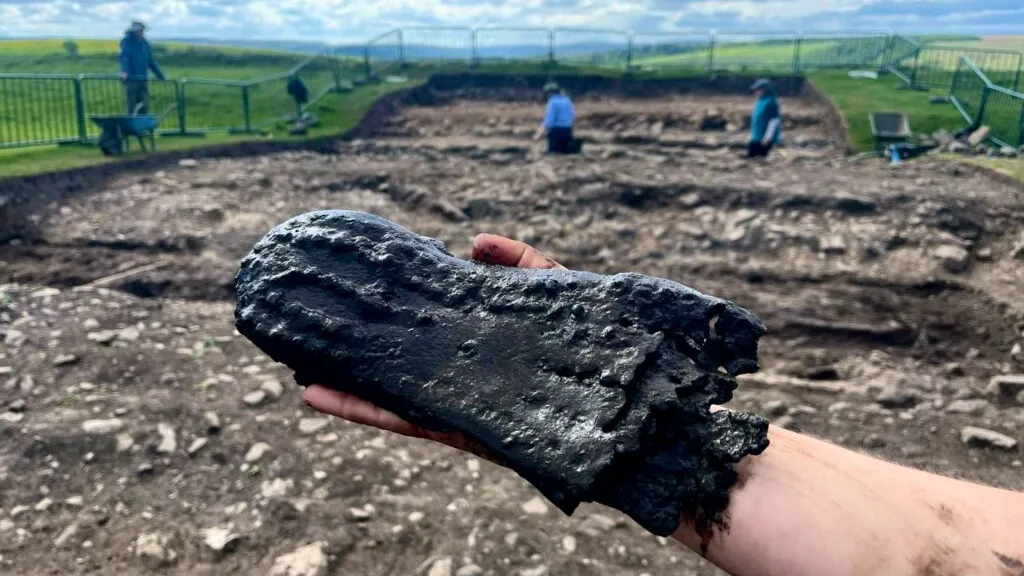Archaeologists excavating the Roman fort of Magna in northern England have uncovered a remarkably large leather shoe. It dates back nearly two millennia. During a dig, archaeologists discovered the shoe at the bottom of a defensive trench called an “ankle-breaker”—a narrow, waterlogged ditch specifically designed to trip invading enemies.
Exceptional Preservation in Waterlogged Trench

Archaeologists found the shoe with two others and several leather scraps. The trench’s oxygen-free, wet conditions preserved them exceptionally well.These circumstances have helped retain rare organic materials that usually decay over time.
Measuring approximately 12.6 inches (32 cm) in length—comparable to a modern U.S. men’s size 14—the shoe is unusually large for the Roman period and may have belonged to an exceptionally tall individual.
A Glimpse into Roman Craftsmanship
Notably, the artifact displays multiple layers of leather, held together with thongs, stitching, and hobnails. Experts say the construction reveals important details about Roman shoemaking and the personal items of soldiers at Hadrian’s Wall.
A Magna Project volunteer wrote in the excavation blog, “A shoe is a personal item that connects you to the people who lived at the fort.”
Magna: A Key Outpost on Hadrian’s Wall
Also known as Carvoran, Magna lies about 11 kilometers west of Vindolanda. Vindolanda is a Roman fort famous for its writing tablets and military artifacts. Magna was one of several auxiliary forts built or expanded after Hadrian’s Wall was completed around AD 122. This wall marked the northern boundary of the Roman Empire in Britain.
The ongoing excavation is part of the Magna Project, which aims to uncover more about Roman military life and frontier defenses in northern Britannia.
Unlocking Personal Stories from the Roman Past
This find adds to a growing body of evidence showing the daily lives and individuality of Roman soldiers and residents. Monumental ruins and inscriptions tell one side of history. Items like footwear offer a more personal connection to the people who once walked these ancient paths.
Archaeologists continue to study the shoes and accompanying finds, aiming to deepen our understanding of the Roman presence in Britain.

